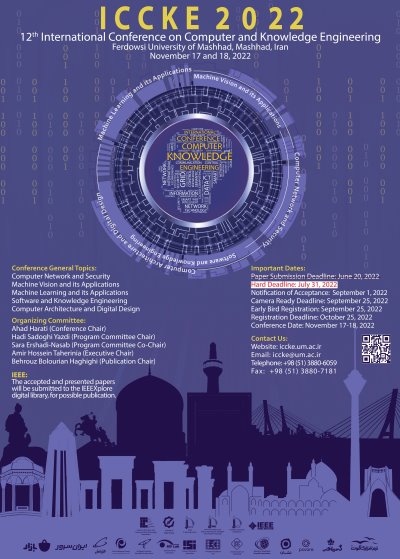0% Complete

Authors :
Keywords :
Abstract :
List of archived papers
Mahsa Zahedi - Mohammad Sediq Abazari Bozhgani - Abdorreza Savadi
Dara Rahmati - Mohammad Hadi Foroughi - Ali Bagherzadeh - Mehdi Foroughi - Saeid Gorgin
Seyed Reza Razavi Pour - Leila Ahmadi - Amir Ahmad Shishegar
Mohammad Mehdi Jaziriyan - Ahmad Akbari - Hamed Karbasi
Arya Parvizi - Armin Salimi-Badr
Ali Bazghandi
Afsaneh Habibi - Fattaneh Taghiyareh
Hoda Shad - Mona Zamiri - Tahereh Bahreini - Reza Monsefi - Ghoshe Abed Hodtani
Behnam Yousefimehr - Mehdi Ghatee - Ali Heydari
Fakhroddin Noorbehbahani - Nikta Akbarpour - Mohammad Reza Saeidi




